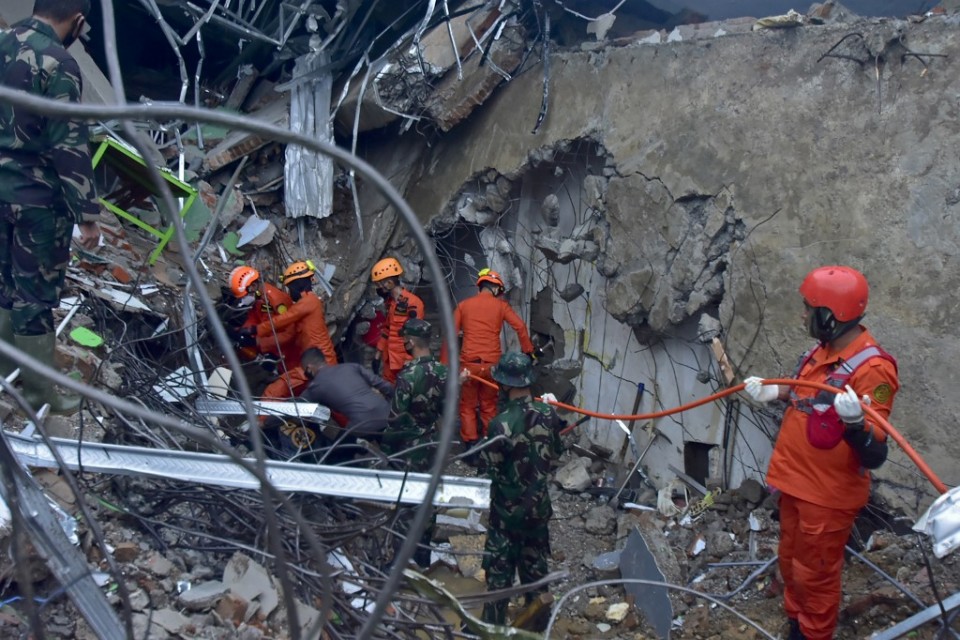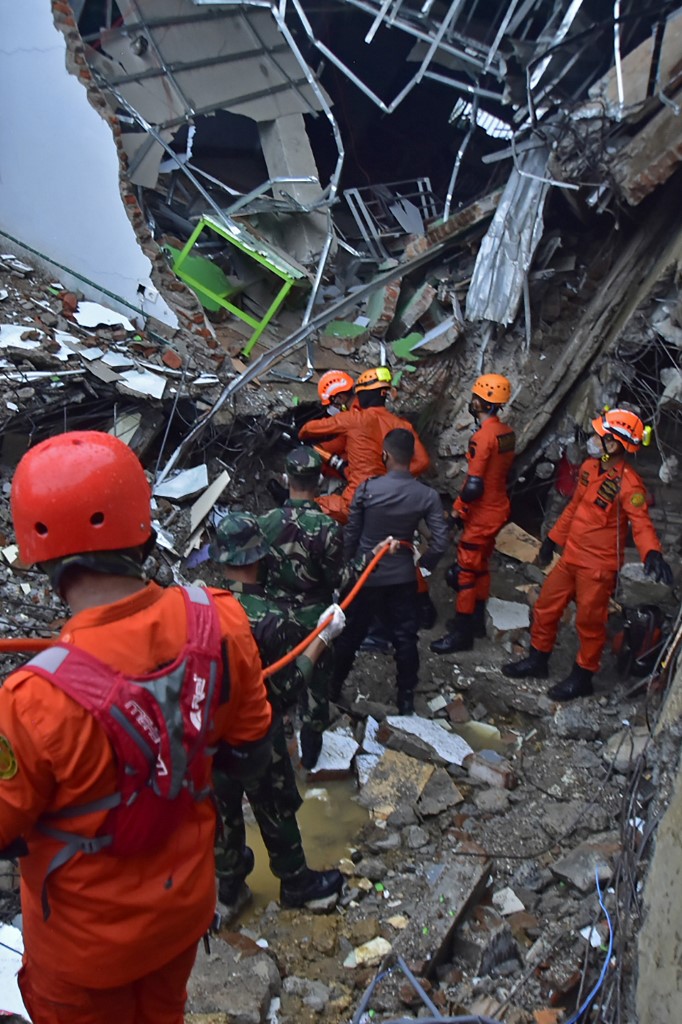
by Haeril HALIM / Agnes ANYA
Agence France Presse
JAKARTA, Indonesia (AFP) — A powerful earthquake rocked Indonesia’s Sulawesi island Friday, killing at least 42 people, levelling a hospital and severely damaging other buildings, authorities said, as they warned there were people still trapped beneath rubble.
Hundreds were also injured when the 6.2-magnitude quake struck in the early hours, triggering panic among the terrified residents of the island, which was hit by a huge quake and tsunami two and a half years ago that killed thousands.
So far, 34 bodies have been hauled from beneath crumpled buildings in Mamuju, a city of about 110,000 in West Sulawesi province, while another eight were killed south of the area after the quake struck.
“We don’t know how many more are missing,” said Arianto from the rescue agency in Mamuju, who like many Indonesians goes by one name.
“There are still people trapped beneath the rubble.”
Rescuers were searching for more than a dozen patients and staff trapped under a levelled Mamuju hospital.

“The hospital is flattened — it collapsed,” Arianto said.
Earlier Friday, rescuers said they were also trying to reach a family of eight who were under their destroyed home.
At least one hotel had partially collapsed, while the regional governor’s office also suffered extensive damage after the quake struck at 2:18 am local time Friday (1818 GMT Thursday).
A Mamuju resident said damage across the city was severe.
“Roads are cracked and many buildings collapsed,” said 28-year-old Hendra, who also goes by one name.
“The quake was very strong… I woke up and ran away with my wife.”
– Tsunami panic –
Images from the scene showed residents trying to flee the seaside city in cars and motorbikes as they drove past corrugated metal roofs and other building debris scattered on the roadside.
But landslides triggered by heavy rains and the quake blocked the main access road out of Mamuju.
The meteorological agency warned residents that the area could be hit by strong aftershocks and to avoid the beachfront in case of a tsunami.
“The aftershocks could be as strong, or stronger, than this morning’s quake,” said Dwikorita Karnawati, chief of the meteorological agency.
“There is potential for a tsunami from subsequent aftershocks… Don’t wait for a tsunami first because they can happen very quickly,” she added.
The warning sparked more fear in the quake-jolted city.
“(Everyone) is panicking,” Mamuju resident Zulkifli Pagessa told AFP.
The city’s airport had also been damaged, authorities said.
The Indonesian Red Cross said it was rushing medical and relief supplies to the scene, with its teams working to help find trapped residents.
“Our first priority is to search for survivors and tend to the wounded,” said Sudirman Said, secretary general of the local Red Cross.
“These hours are critical for saving lives. We are working double time to help injured survivors, keep them safe from Covid-19 and provide relief to the thousands who have been displaced from their homes,” he added.
The quake’s epicentre was 36 kilometres (22 miles) south of Mamuju and it had a relatively shallow depth of 18 kilometres, the United States Geological Survey said.
“The wall of my house collapsed,” said Hanafi, a 47-year-old who lives in nearby Majene, which also suffered damage and casualties.
“The refrigerator, the cupboard all tumbled onto the floor.”
Images supplied by the search-and-rescue agency showed rescue workers checking on two young girls who were trapped under the rubble of one structure.
Indonesia experiences frequent seismic and volcanic activity due to its position on the Pacific “Ring of Fire”, where tectonic plates collide.
In 2018, a 7.5-magnitude quake and a subsequent tsunami in Palu on Sulawesi left more than 4,300 people dead or missing.
On December 26, 2004, a 9.1-magnitude earthquake struck off the coast of Sumatra and triggered a tsunami that killed 220,000 throughout the region, including around 170,000 in Indonesia.
© Agence France-Presse







